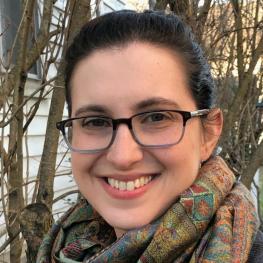Catch ‘Em All! Conversations with Fellows
The 2024–2025 fellows share the interests and inspirations that animate their scholarship
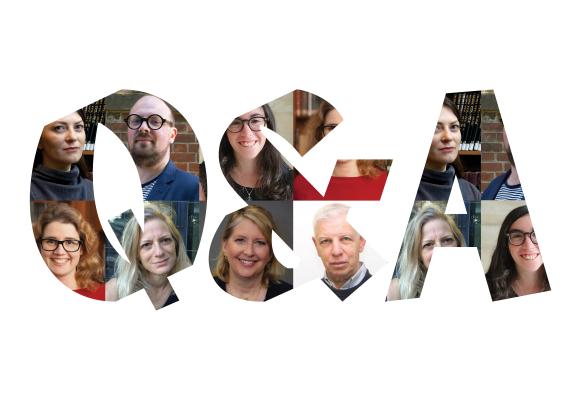
During the 2024–25 academic year, our fellows approached the theme of Jews and Health from a diverse array of fields ranging from folk medicine to contemporary demography. In addition to gathering to share their findings in weekly seminars, the fellows each sat down with Natalie Dohrmann to describe research, projects, and inspirations, and gave us a deeper look into their scholarly selves. As we say goodbye to this year’s cohort, please enjoy this opportunity to dive into the constantly growing collection of Q&As. There are more on the horizon, so keep an eye on our blog this summer.
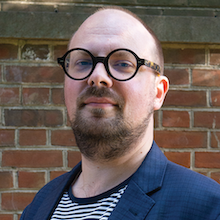 "My interest in the culture of Eastern Ashkenaz began when I first encountered the popular hagiographies of Hasidic leaders published in Hebrew and Yiddish. As I studied the profiles of figures such as R. Chaim Halberstam of Sandz or R. Menachem Mendel Morgenstern of Kotsk, my attention naturally turned to the role of healers ascribed to them by tradition…”
"My interest in the culture of Eastern Ashkenaz began when I first encountered the popular hagiographies of Hasidic leaders published in Hebrew and Yiddish. As I studied the profiles of figures such as R. Chaim Halberstam of Sandz or R. Menachem Mendel Morgenstern of Kotsk, my attention naturally turned to the role of healers ascribed to them by tradition…”
READ MORE from Marek Tuszewicki on folk medicine in Eastern Europe.
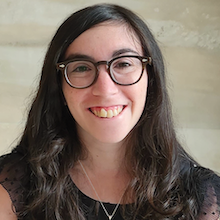 “I'm particularly interested in the tension between political and social citizenship, specifically with regard to the stigma associated with illness and disability all the way from the federal government to the local level. As an American Jewish historian, I'm eager to explore how Jewish communal leaders in the United States responded to exactly this stigma and discrimination, and what their attitude was (and how it evolved) toward the intersection of illness, disability, and national belonging at various places and moments in time…”
“I'm particularly interested in the tension between political and social citizenship, specifically with regard to the stigma associated with illness and disability all the way from the federal government to the local level. As an American Jewish historian, I'm eager to explore how Jewish communal leaders in the United States responded to exactly this stigma and discrimination, and what their attitude was (and how it evolved) toward the intersection of illness, disability, and national belonging at various places and moments in time…”
READ MORE about Hannah Zaves-Greene’s work in disability studies and American Jewish history.
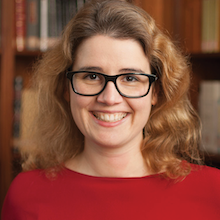 “Over the last few years, my research has focused on the Sephardic diaspora in the early modern Atlantic. However, my connection to this topic goes back a long way. While completing my master’s degree, I began collaborating with the Center Alberto Benveniste, a Sephardic studies research center at the University of Lisbon. There, I contributed to a biographical dictionary of Portuguese Jewish and converso merchants in the early modern period. This project was my first encounter with these intricate networks that spanned the Atlantic and Mediterranean..."
“Over the last few years, my research has focused on the Sephardic diaspora in the early modern Atlantic. However, my connection to this topic goes back a long way. While completing my master’s degree, I began collaborating with the Center Alberto Benveniste, a Sephardic studies research center at the University of Lisbon. There, I contributed to a biographical dictionary of Portuguese Jewish and converso merchants in the early modern period. This project was my first encounter with these intricate networks that spanned the Atlantic and Mediterranean..."
READ MORE from Carla Vieira about the key role played by Sephardic physicians in the circulation of early Modern scientific knowledge.
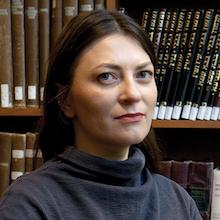 “…I grew up in post-communist and post-partition Slovakia. In the 90s, people were obsessed with creating the national story of their peoplehood. It was impossible not to experience it as limiting and based on omissions and blatant erasures and the Jewish historical experience was no exception. My early encounters with 'history' were a hard lesson in how history can do us a disservice. Little did I know that it would be far more challenging to express what history ought to be… ”
“…I grew up in post-communist and post-partition Slovakia. In the 90s, people were obsessed with creating the national story of their peoplehood. It was impossible not to experience it as limiting and based on omissions and blatant erasures and the Jewish historical experience was no exception. My early encounters with 'history' were a hard lesson in how history can do us a disservice. Little did I know that it would be far more challenging to express what history ought to be… ”
READ MORE about Magdalena Janosikova’s research into the history of medicine in early modern Ashkenaz.
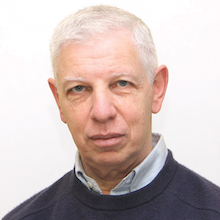 “I'm a demographer. As such, I am interested in the study of human populations through quantitative data. My research is concerned with Jews in modern times in comparison with the general population or other religious groups around them…Recently, I have also taken an interest in Jews and health—especially in the context of the Covid-19 pandemic. Jewish demography connects two fields of knowledge that have always interested me: social sciences—and especially people’s behavior—and the history of the Jewish people…”
“I'm a demographer. As such, I am interested in the study of human populations through quantitative data. My research is concerned with Jews in modern times in comparison with the general population or other religious groups around them…Recently, I have also taken an interest in Jews and health—especially in the context of the Covid-19 pandemic. Jewish demography connects two fields of knowledge that have always interested me: social sciences—and especially people’s behavior—and the history of the Jewish people…”
READ MORE from Uzi Rebhun’s conversation emphasizing the importance of counting.
 “Since early childhood, I was fascinated by Tibet. Before becoming an academic, I was a journalist, and at some point in the late 1980s, found myself in Tibet. The experiences I had there, the people I met, the stories they told me, made such a deep impression that I decided I must learn more about this fascinating culture…While working on the Tibetan medical manuscripts from Dunhuang, I came across the Hebrew Book of Asaf (Sefer Asaf). I read an article by Elinor Lieber about it, where it was suggested that Sefer Asaf was based on Tibetan medicine. I was captivated...”
“Since early childhood, I was fascinated by Tibet. Before becoming an academic, I was a journalist, and at some point in the late 1980s, found myself in Tibet. The experiences I had there, the people I met, the stories they told me, made such a deep impression that I decided I must learn more about this fascinating culture…While working on the Tibetan medical manuscripts from Dunhuang, I came across the Hebrew Book of Asaf (Sefer Asaf). I read an article by Elinor Lieber about it, where it was suggested that Sefer Asaf was based on Tibetan medicine. I was captivated...”
READ MORE about Ronit Yoeli-Tlalim’s work expanding the map of medieval Jewish knowledge transfer.
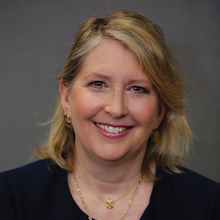 “My scholarly interests are somewhat eclectic, born out of a combination of feminist conviction, pedagogical happenstance, and contemporary urgency. My first book, And Rachel Stole the Idols: The Emergence of Modern Hebrew Women’s Writing (2004)—and much of my work ever since—deals with the first Hebrew women prose writers and poets, and what happens when women finally enter into a Hebrew literary tradition where they had been almost entirely absent for centuries...”
“My scholarly interests are somewhat eclectic, born out of a combination of feminist conviction, pedagogical happenstance, and contemporary urgency. My first book, And Rachel Stole the Idols: The Emergence of Modern Hebrew Women’s Writing (2004)—and much of my work ever since—deals with the first Hebrew women prose writers and poets, and what happens when women finally enter into a Hebrew literary tradition where they had been almost entirely absent for centuries...”
READ MORE from Wendy Zierler about where storytelling, medicine, and gender come together in modern Israeli writing.
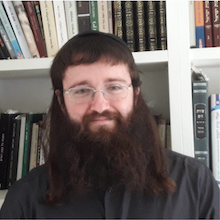 "My scholarly interests center on the complex relationships between theology, science, and secularism from the sixteenth to the nineteenth centuries. I’m especially interested in how these interactions shaped the conceptual frameworks we still inhabit today. A central question that drives my work is: how have competing narratives about science and religion—both historical and philosophical—shaped modern culture, and how do they continue to inform contemporary value judgments debates and, both within and beyond the Jewish world?"
"My scholarly interests center on the complex relationships between theology, science, and secularism from the sixteenth to the nineteenth centuries. I’m especially interested in how these interactions shaped the conceptual frameworks we still inhabit today. A central question that drives my work is: how have competing narratives about science and religion—both historical and philosophical—shaped modern culture, and how do they continue to inform contemporary value judgments debates and, both within and beyond the Jewish world?"
READ MORE about Ahuvia Goren's research on the circulation of the idea of circulation.
 My research centers on the interconnection between religion, gender, and media—three elements I find inseparable. Understanding religion requires that we address gender dynamics, and vice versa. Simultaneously, most of our worldviews are shaped through media channels, from traditional news outlets like The New York Times to social platforms like TikTok. Growing up in Israel's National ultra-Orthodox community, I began formulating my research questions early, by contemplating what it means to be religious, particularly as a woman, in a secular world.
My research centers on the interconnection between religion, gender, and media—three elements I find inseparable. Understanding religion requires that we address gender dynamics, and vice versa. Simultaneously, most of our worldviews are shaped through media channels, from traditional news outlets like The New York Times to social platforms like TikTok. Growing up in Israel's National ultra-Orthodox community, I began formulating my research questions early, by contemplating what it means to be religious, particularly as a woman, in a secular world.
READ MORE from Rivka Neriya-Ben Shahar's work examining the lives of women from two of the Western world's most conservative religious groups—the Amish and ultra-Orthodox Jews.
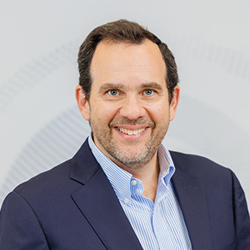 Since childhood I have been intrigued by the diverse and novel expressions of Jewish identity that characterize the modern and contemporary periods. This may reflect, in part, my own upbringing in a family, community, and educational institutions that self-defined as Orthodox, but encompassed a broad range of Jewish lifestyles and/or demonstrated appreciation for distinct perspectives and contributions.
Since childhood I have been intrigued by the diverse and novel expressions of Jewish identity that characterize the modern and contemporary periods. This may reflect, in part, my own upbringing in a family, community, and educational institutions that self-defined as Orthodox, but encompassed a broad range of Jewish lifestyles and/or demonstrated appreciation for distinct perspectives and contributions.
READ MORE about Adam Ferziger's work examining the notion of the Jewish body through the lens of cremation.
